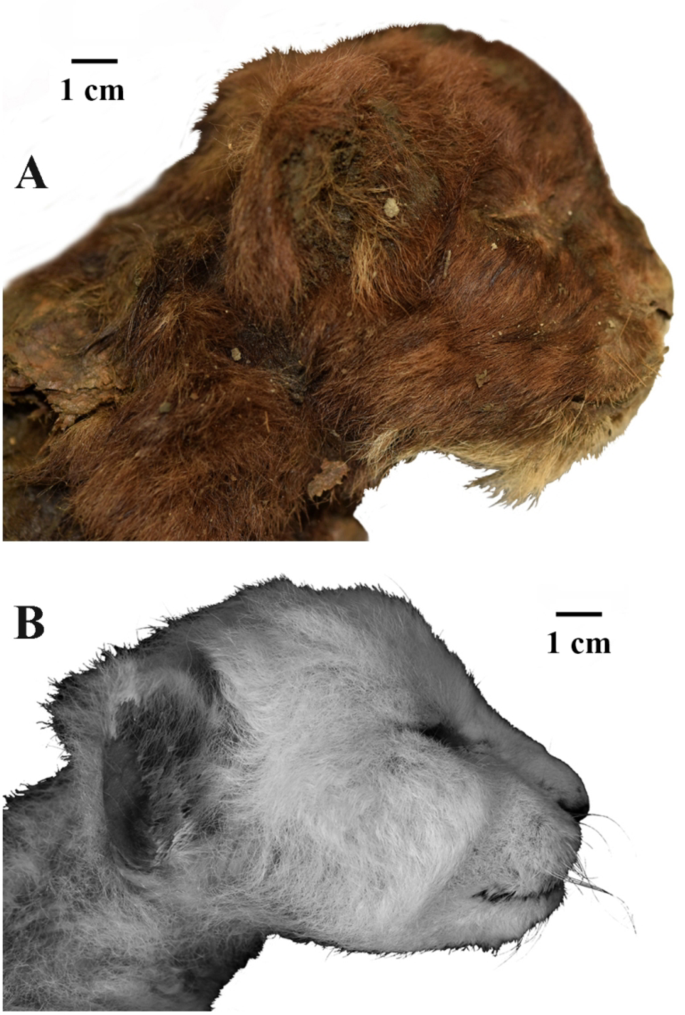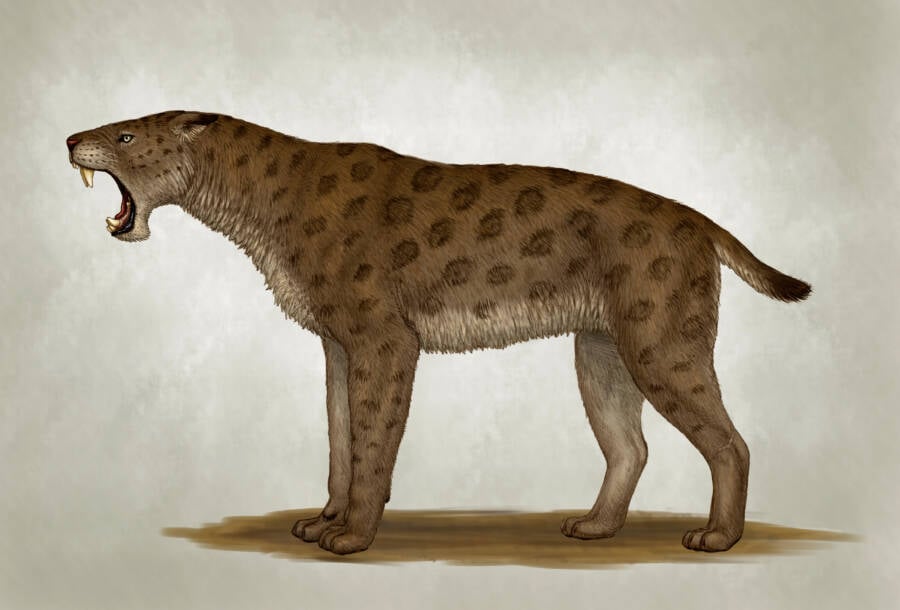This remarkably well-preserved specimen is the first mummy of a saber-toothed cat ever discovered, and it's providing groundbreaking insight into what the species actually looked like.

A. V. Lopatin et al., Scientific Reports 2024This discovery marks the first time a mummy of a saber-toothed cat has ever been found.
Tens of thousands of years ago, the icy plains of Siberia once teemed with remarkable wildlife like mammoths, woolly rhinos, lions, bison, and wolves. In 2020, evidence of this incredible ecosystem was found in the permafrost when prospectors in eastern Siberia came across the well-preserved mummy of a saber-toothed kitten.
Just three weeks old when it died and still covered in a coat of soft, dark fur, the 37,000-year-old saber-toothed kitten is a remarkable discovery for a number of reasons. First of all, it is the first saber-toothed cat mummy ever found. In addition, it promises to answer questions about the iconic prehistoric felines, from the color of their fur to what their famous teeth really looked like.
The Saber-Toothed Kitten Found In The Siberian Permafrost
According to a study just published in the journal Scientific Reports, the saber-toothed kitten was first discovered in 2020. Prospectors looking for mammoth tusks came across the tiny, incredibly well-preserved mummy in the Siberian permafrost near the Badyarikha River.

A. V. Lopatin et al., Scientific Reports 2024The saber-toothed kitten mummy’s head (top) compared to that of a modern lion cub.
The prospectors brought the mummy to the Russian Academy of Sciences in Moscow, where scientists were delighted to study such a rare specimen.
They found that the saber-toothed kitten, a Homotherium latidens, died around 37,000 years ago. It is covered with “short, thick, soft, dark brown fur,” with longer fur on its back and neck than on its legs. It also has tufts of fur near its mouth, like a “beard” in adult cats, and almost completely preserved pads on the underside of its paws, which are “bean-shaped.”

A. V. Lopatin et al., Scientific Reports 2024The saber-toothed kitten’s paw as compared to a lion cub’s paw. The pads of its foot are still very visible.
“The wide paw, the subsquare shape of its pads, and the absence of a carpal pad are adaptations to walking in snow and low temperatures,” the scientists who examined the saber-toothed kitten wrote in their study, adding: “All these features can be interpreted as adaptations to living in cold climate.”
Scientists believe that the kitten was only three weeks old when it died. But though it lived for just a short time tens of thousands of years ago, it can tell us a lot about what saber-toothed cats were like.
What The Newly-Discovered Mummy Can Teach Us About Saber-Toothed Cats

Stocktrek Images, Inc. / Alamy Stock PhotoA depiction of how Homotherium latidens may have looked.
The saber-toothed kitten is remarkable for a number of reasons. It’s the first mummy of a saber-toothed cat ever found — and thus offers the tantalizing possibility that more will be discovered in the area — and has given scientists a chance to closely study its body, from its dark fur to its paw pads.
Perhaps the most interesting part of the mummy, though, is its teeth. Scientists have long debated whether or not the teeth of saber-toothed cats protruded from their mouths or were covered by their upper lips.
Though the saber-toothed kitten’s fearsome teeth were not yet fully developed, scientists were able to determine that its upper lip “exceeds that of the lion cub more than twice.” This suggests that the cats’ teeth were covered.
In the end, the mummy of the saber-toothed kitten stands as an exciting discovery — and just the latest prehistoric creature to emerge from the Siberian permafrost. This year alone, scientists have also studied prehistoric birds and even viruses that were preserved in the ice.
Who knows what will emerge next?
After reading about the saber-toothed kitten mummy discovered in Siberia, look through this collection of some of Earth’s most incredible prehistoric animals. Or, learn about the Megatherium, the giant sloth that once wandered the jungles of the prehistoric Amazon.





